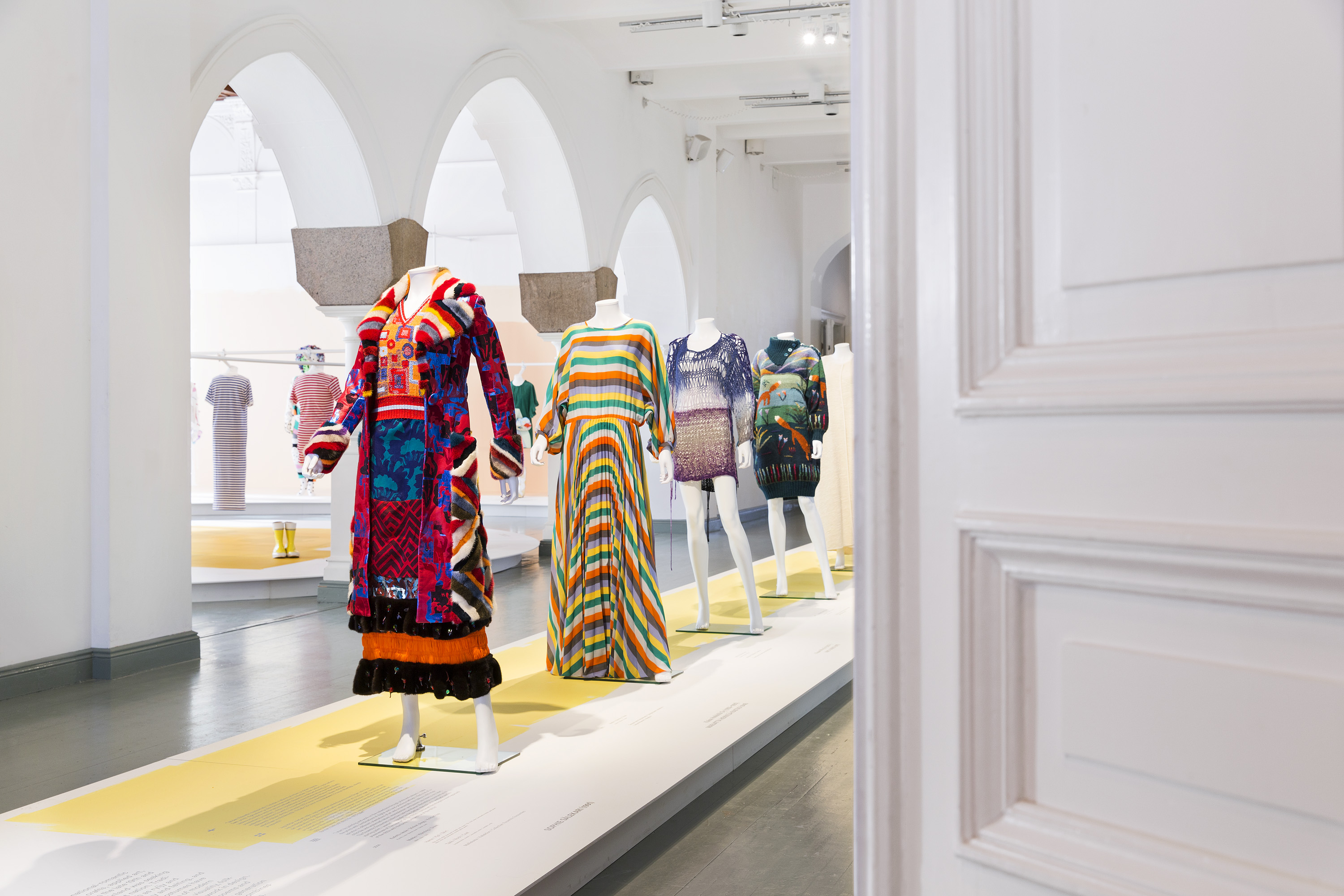
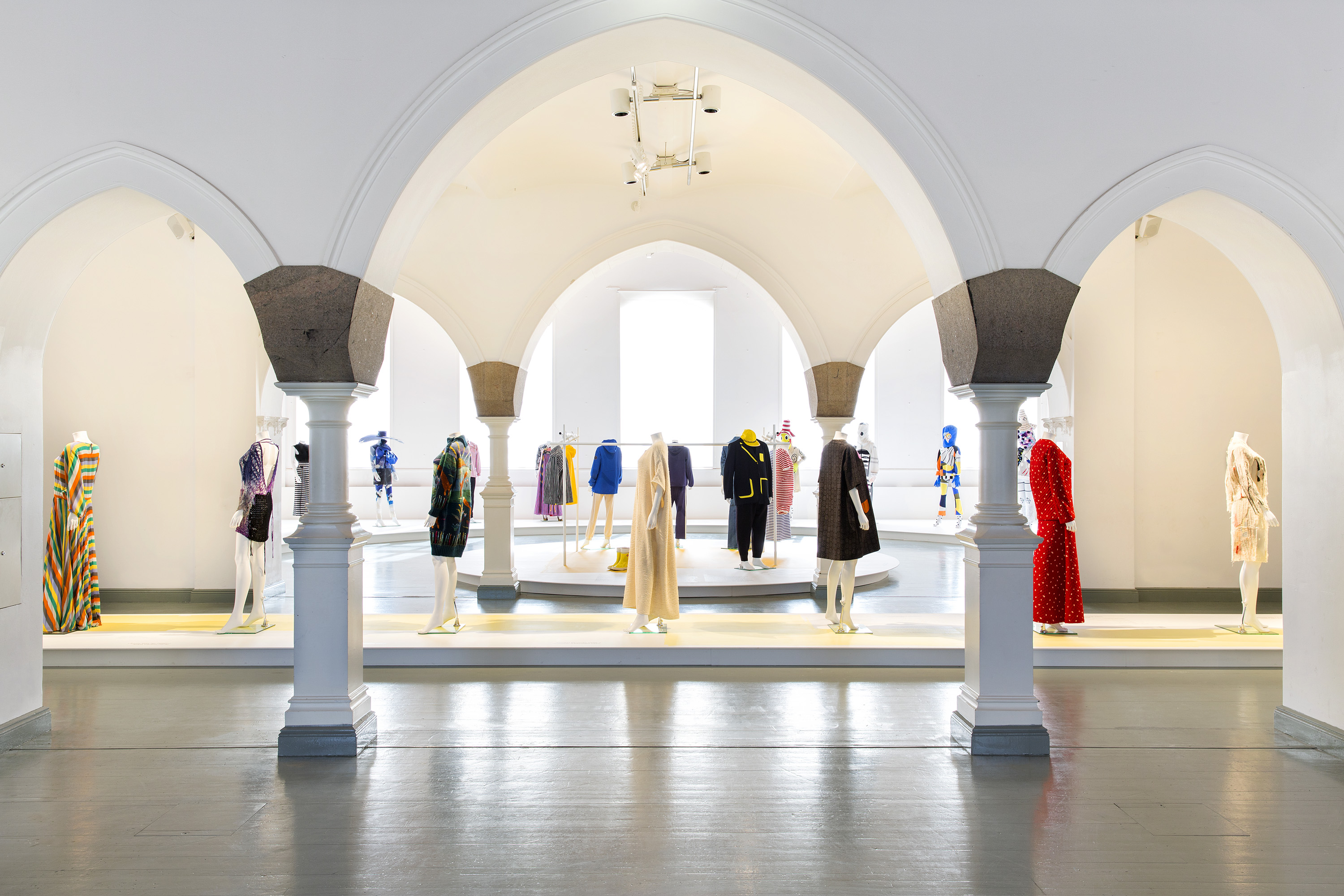
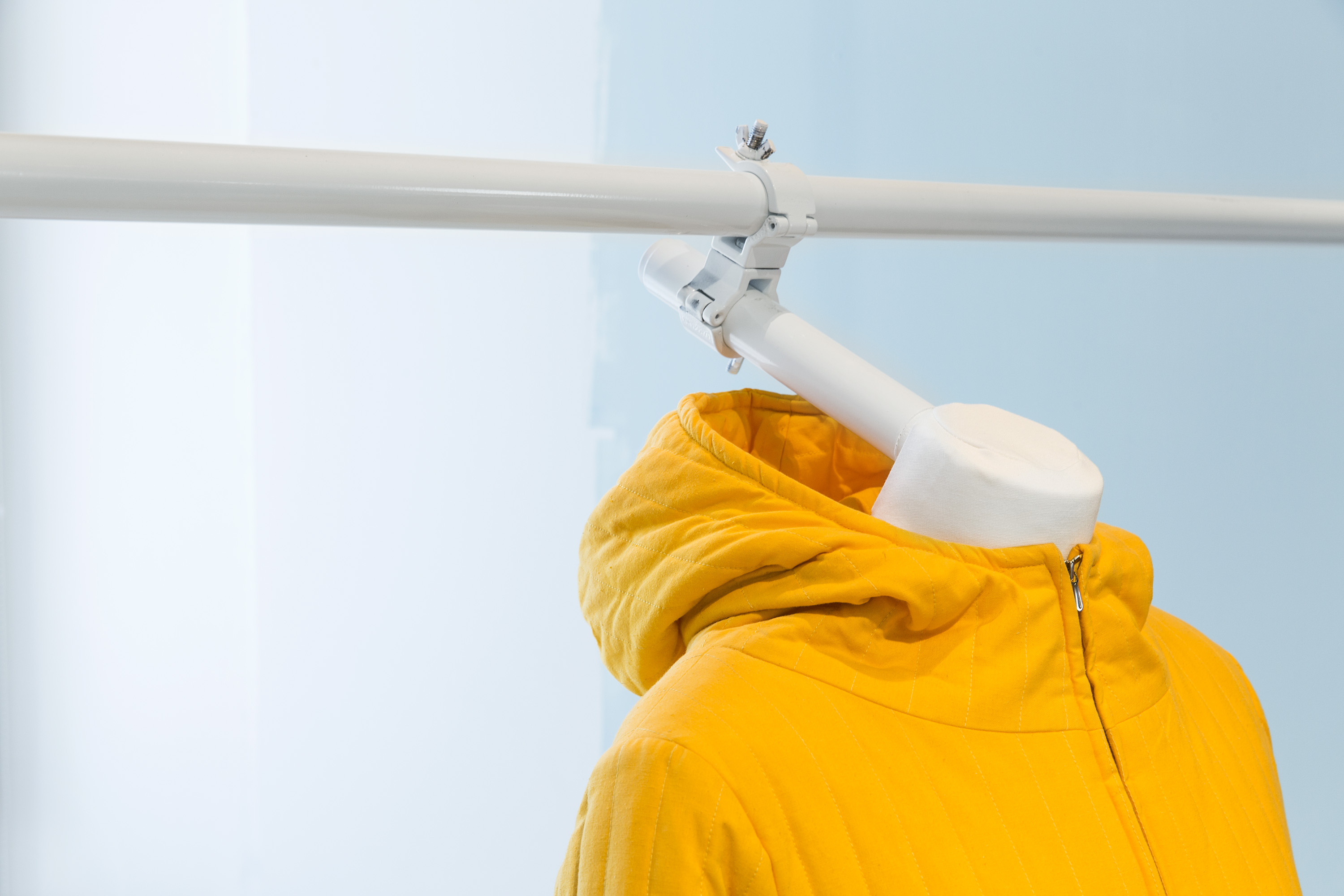

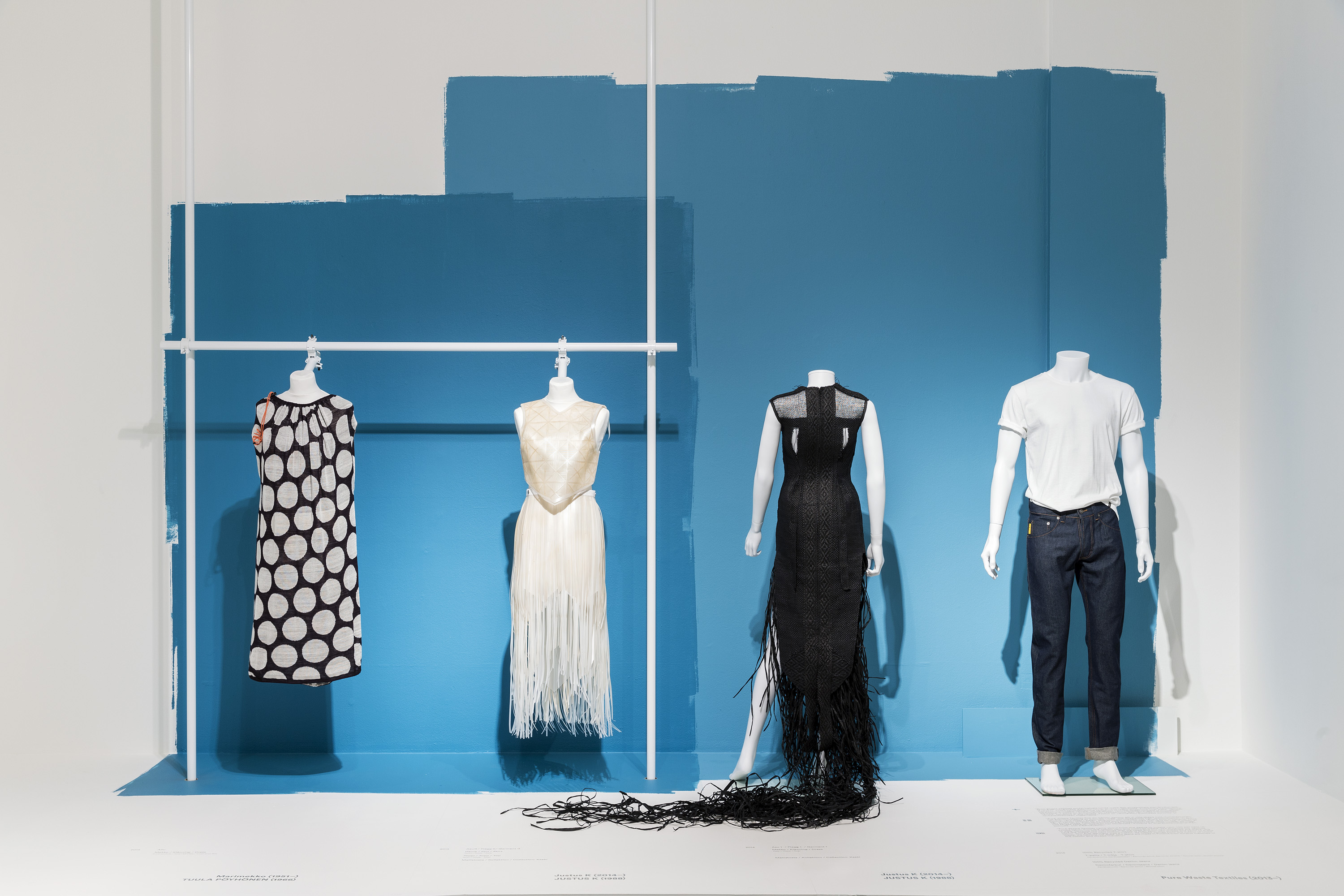
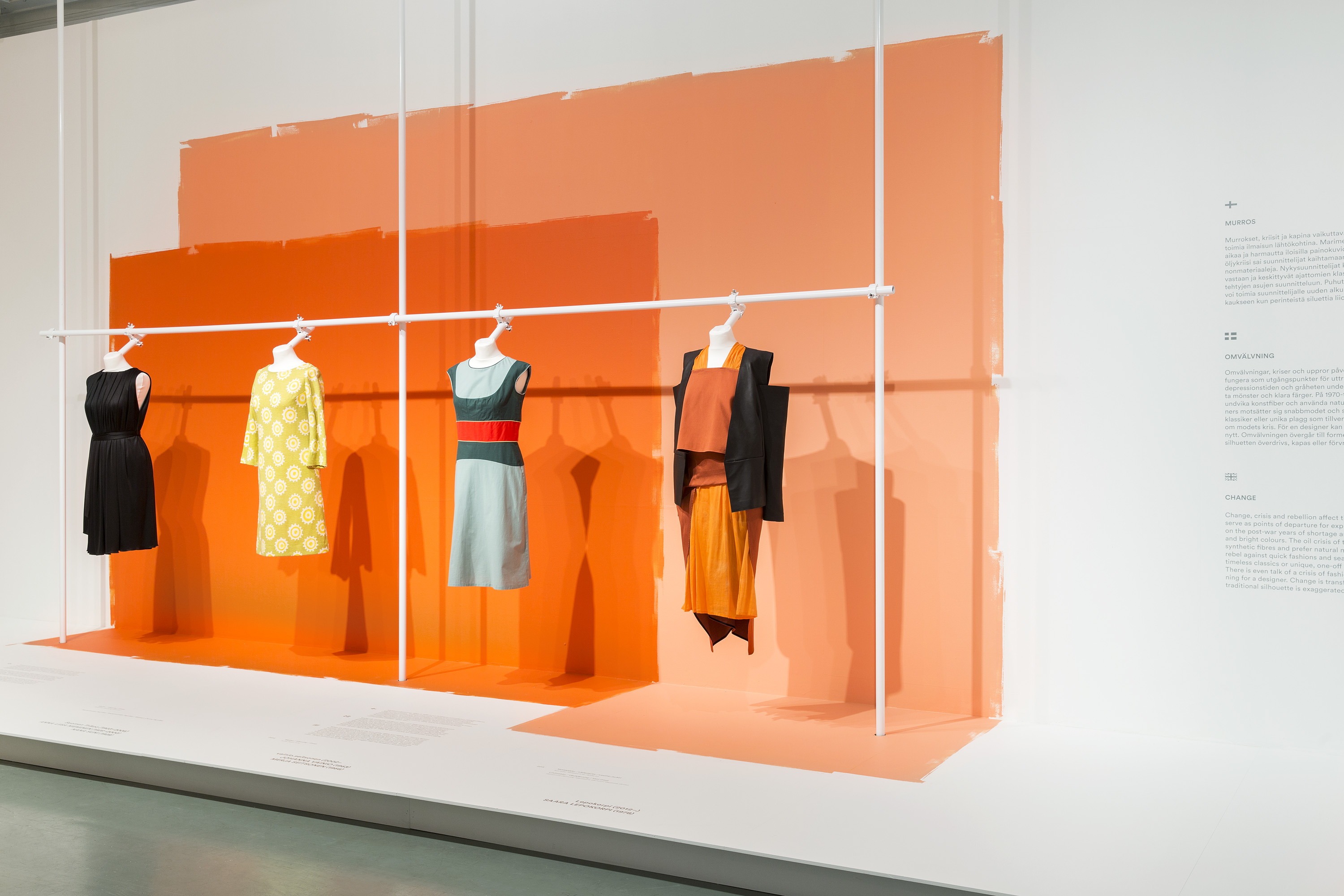

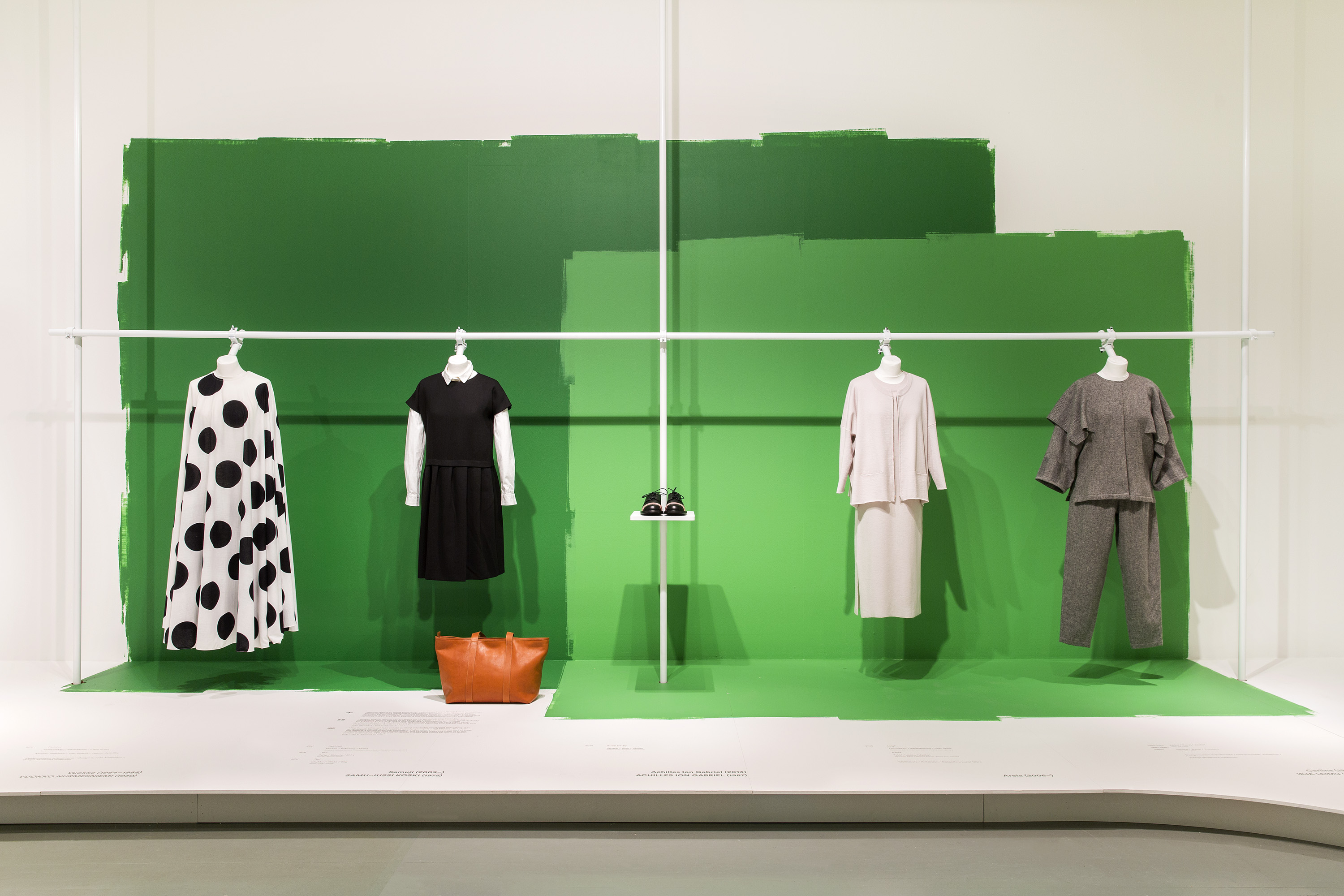
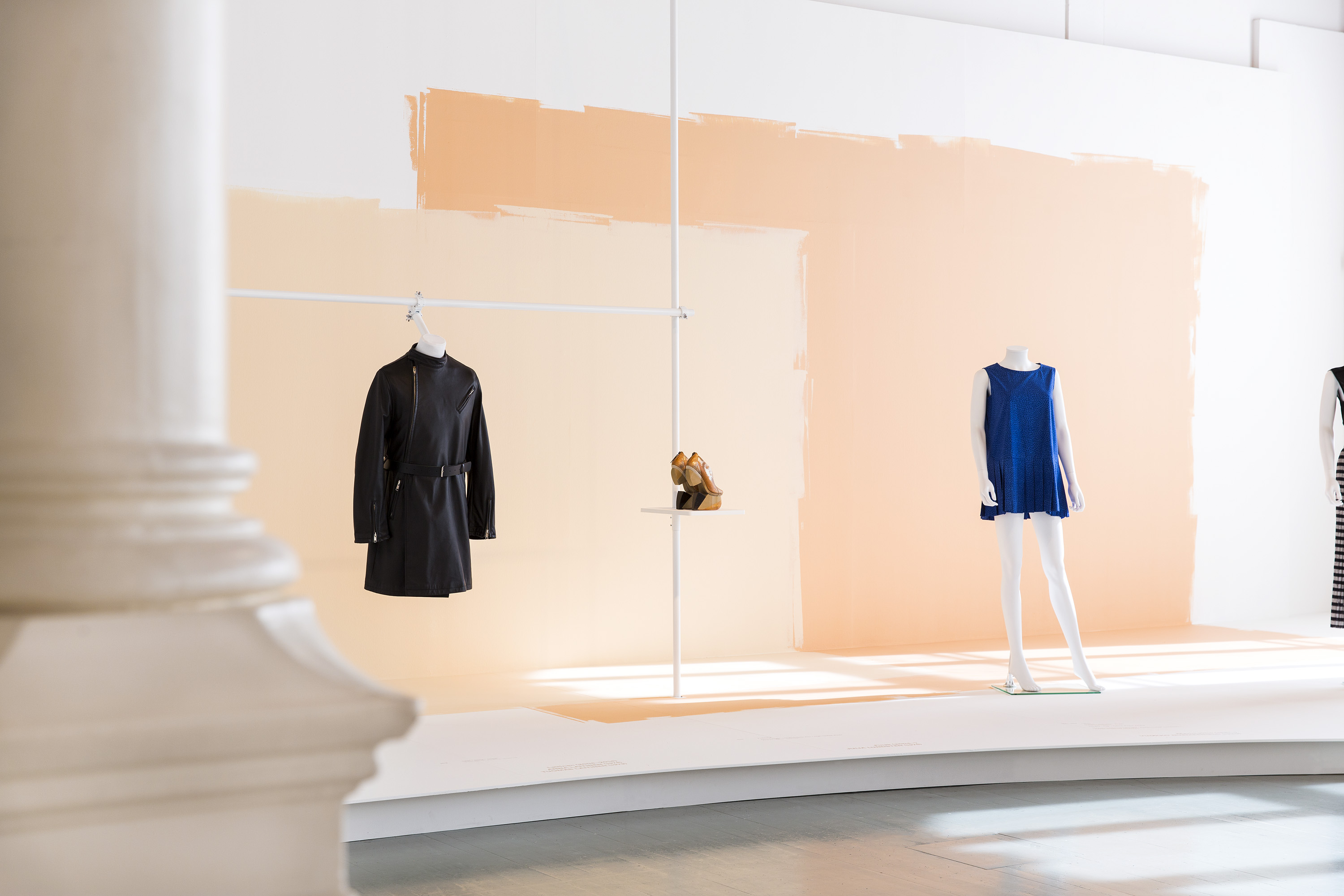

A couple of years ago, my friend Suvi, the chief curator of the Design Museum in Helsinki, decided that a comprehensive museum exhibition about Finnish fashion needed to be developed as soon as possible: the Finnish fashion has made a striking entrance in recent years, and the scene is flourishing with young, talented and internationally potential designers. It has even been said that Finnish fashion has not had such a moment since Jacqueline Kennedy fell in love with Marimekko’s cheerful prints during the ’60s. And there has never been a historical exhibition on this theme before.
Suvi asked if I would like to help with the curation, and of course I said YES! As a former student of museology and history, curating an exhibition was a dream-come-true for me. As a result of that conversation, the exhibition “Finnish Fashion: An Anthology” opened on June 5, and closed one week ago.
First, we proposed the following questions: “What is Finnish fashion?” “What does it look like?” and “Why does it look like it does?” Based on these questions, we developed the nine themes around which we built the exhibition: Change, The Economic Boom, The Engineering Mindset, Equality, Folk, Globalization, The Millennium, Modernism, and Winter. We wanted to learn how the development and conditions of Finnish society have been manifested in fashion through the post-war decades.
The Design Museum has an extensive, marvelous fashion and clothes collection, which naturally formed the starting point for the curation work. Approximately one-third of the exhibits come from the museum’s collections.
We started working on the exhibition after I had moved to San Francisco, so I was unfortunately unable to meet and interview designers and visit the museum archives. On the other hand, working from such a long distance gave me a new perspective on a familiar subject.
After any project I think it’s good to ask, what lessons did I learn?
Firstly, some of the most iconic pieces of Finnish fashion do not exist anymore, or they are too worn-out to be exhibited. Therefore, some key pieces were missing from the exhibition, such as the Lee Cooper parka jacket by Irja Leimu and Mic Mac jeans.
Thirdly, it’s super expensive to create museum exhibitions. You need to insure all the exhibits, post them back and forth, and do loads of paper work. This takes money and time. When we began working, we dreamed of publishing a catalogue or book in conjunction with the exhibition. We also dreamed of showcasing photos and videos in addition to outfits. This time these dreams did not come true.
In a way, I agree with the cultural critique from Aino Frilander at Helsingin Sanomat: our exhibition was a missed opportunity. This could have been the most perfect opportunity and timing to gather and publish more information about the history of Finnish fashion in a form of a comprehensive publication. The Design Museum is able to publish only one printed catalogue per a year which means not all exhibitions can have one.
However, I think this is just the beginning! After all, this was the very first historical exhibition on the subject. I’m sure there will be many more opportunities for books, articles, exhibitions, and conversations about Finnish fashion.
The final conclusion: I’m super happy with the end result. The exhibition looked like we did it: it’s positive, colourful, multifaceted. It also questions the traditional definition of the ‘fashion’.
PS: I just learned that there were 28% more visitors to the Design Museum this July than there were last July. Yay!
Interior Architecture by Linda Bergroth. Photos by Paavo Lehtonen.

